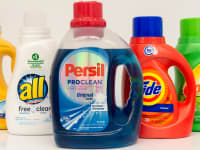'Laundry Guy' Patric Richardson is not afraid of white sheets and red wine
Here's how to keep your white bedding looking brand-new, according to the pro.
Products are chosen independently by our editors. Purchases made through our links may earn us a commission.
Patric Richardson has a spotless reputation, and a fearless attitude when it comes to stains. In his mind, the potential for a little mess shouldn’t hamper any fun—hence his assurance that white sheets and red wine make fine bedfellows.
But even if you refrain from snacking and you wash your sheets once a week, you may still find that your bedding is faded, dingy, and yellow-ish.
On top of that, it likely wasn't cheap. Our favorite bed sheets, the luxe core set from Brooklinen, will run you around $159. While we stand by our stamp of approval, we don’t blame you if you don’t want to replace them any sooner than you have to.
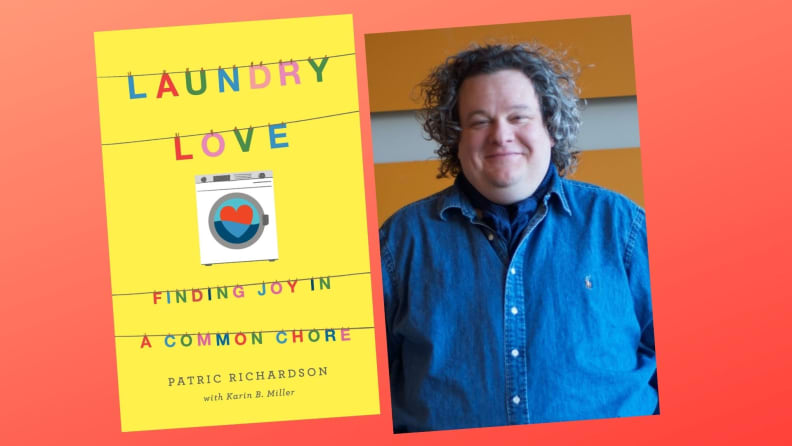
In practical how-to book 'Laundry Love,' Patric Richardson also recounts the women who have shaped his life.
We rang up Richardson to help us sort out the dilemma, but you can also soak in his expertise in his new book, Laundry Love, a practical how-to that walks readers through sorting, washing, and everything in between. His Discovery+ show, The Laundry Guy, where he restores guests’ wedding dresses, stuffed animals, and other dear items to their former glory, debuts on March 31.
In the meantime, here are a few tips to keep your white sheets looking as good as the first time you made your bed.
Skip chlorine bleach
A lot of us pick up white cotton or linen sheets because we think they’re easy enough to maintain. We’ve all got a bottle of chlorine bleach waiting in the wings. Richardson, who opts for black bedding to absorb errant rays from street lamps and to create a “cocoon,” says not so fast. “If you can tell me that it’s OK for me to bleach my black sheets back to black, then I’ll tell you it’s OK for you to bleach your white sheets back to white.”
Our art class lessons, Richardson says, have steered us wrong. “We have this idea that white is the absence of color. It isn't true for laundry,” he explains. “Natural cotton is kind of a warm white, an ecru color.” Or, closer to that yellow your bleached sheets appear to be.
Not to mention, the product causes fading and weakens fabric—not exactly what we’re after when keeping our bedding in tip-top shape.
Stock up on oxygen bleach
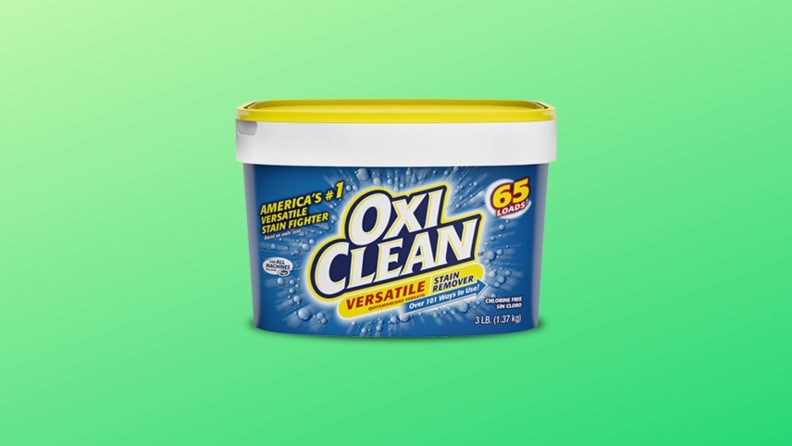
Oxygen bleaches like OxiClean are color-safe, and help keep white sheets bright and free of stains.
Instead, reach for an oxygen bleach such as OxiClean. Richardson’s suggestion is backed by our scientists: We ran lab tests, and it did indeed outperform chlorine bleach. (Keep it on hand to clean towels, tile grout, or your home’s vinyl siding, too.)
If you’re dealing with piping, a design, or even have black sheets like Richardson, not to worry. Oxygen bleach is color-safe.
As for how often to use it, that’s up to you. “If you sleep in long-sleeved pajamas and socks, the reality is you probably don’t have to wash your sheets as often,” Richardson says. On the other hand, some of us cuddle with our pets, or lather up with lotion before bedtime. In that case, you may reach for it more often, even every time you strip your bed. Otherwise, every once in a while is fine to get your sheets back to their prime.
Ease up on the laundry detergent—and fabric softener
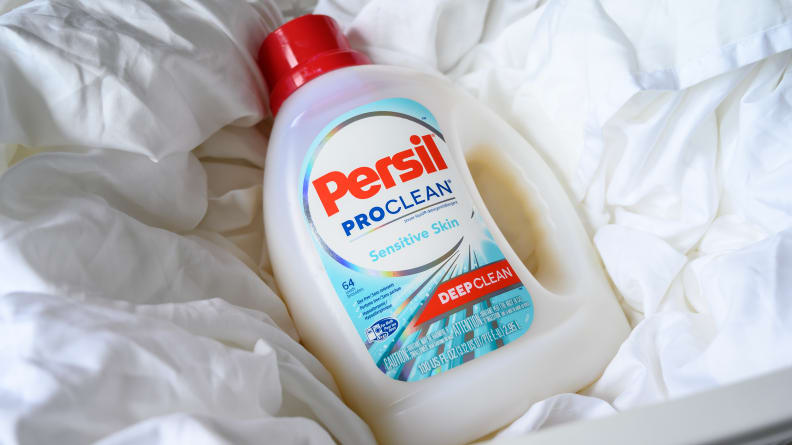
We're using too much laundry detergent. When it comes to washing white sheets, Richardson says: "That's the biggest problem."
Another reason your bedding may look dingy? Most people use too much laundry detergent, and it doesn’t completely rinse out of the fabric. If you suspect this applies to you, Richardson suggests throwing your bedding into the washer—in his words, “not extra hot, not extra long,” and definitely no fabric softener—with the tiniest bit of detergent or laundry soap to clear the lingering product. Moving forward, measure your detergent, and for an extra boost, there’s your new friend oxygen bleach.
As far as doing away with fabric softener, that goes for each and every time you wash your sheets. “The reason sheets feel so good is because they’re breathable and they wick. You take both of those characteristics away with fabric softener and dryer sheets.” Beyond coating textiles, fabric softener also holds onto stains. Plus, striking it from your shopping list will also save some money.
Keep an eye on the dryer
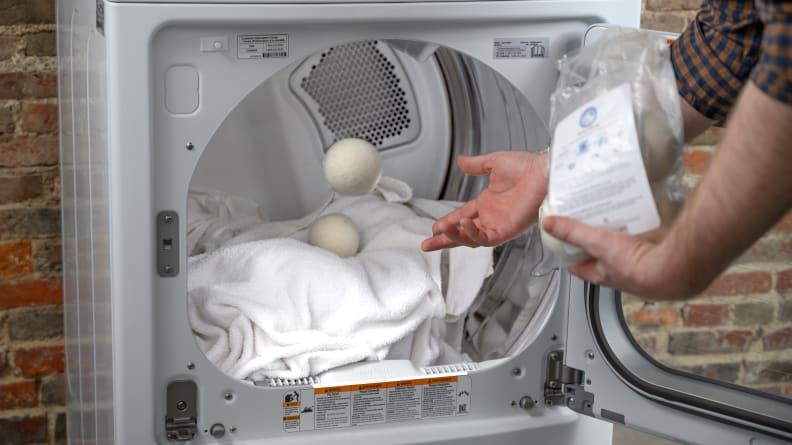
Wool dryer balls help tumble bed sheets—and, according to our lab tests, cut down on drying time.
There is one definitive best way to dry your sheets: “In Provence,” Richardson says, “they lay their sheets in the lavender fields.” Aside from the heavenly smell, sunshine is a natural disinfectant and doesn’t reach the high temperatures of an appliance.
A plain-old clothesline will get you close, and, of course, a dryer still gets the job done. Richardson even recreates the French flair at home by tossing in a couple of wool dryer balls—like Reviewed’s favorite from Budieggs—with a few drops of peppermint essential oil.
He has one last piece of advice: “Don’t let them continue to tumble once they're dry—you’re not doing anything else but wearing them out.”
Richardson says a quality pair of sheets should last at least 55 washes. If you wash your sheets once a week, that’s a little more than a year. A second pair in rotation is helpful on a lot of fronts.
Clean your mattress
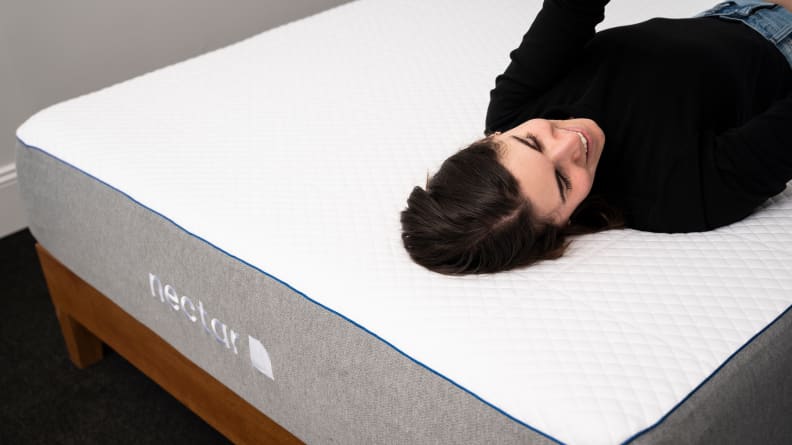
Consider using a mattress protector to keep it free of dust and stains.
Right beneath your sheets, you’ll—surprise—find your mattress. Treat any noticeable stains: “If nothing else, sometimes your sweat will reactivate it,” and transfer to your bedding. You can also regularly vacuum your mattress, or even give it a good deep clean with some baking soda.
And there’s one more line of defense: a mattress protector, available at some of our tried-and-true brands like Nectar, Tuft and Needle, and Leesa. It slips onto your mattress like a fitted sheet, and Richardson notes that you don’t have to wash it as often—say, every few months—but it’ll act as a barrier from dust, dirt, and stains.
Don’t panic
So, what should you do if you end up with a disaster on your hands, like an upturned glass of red wine? The answer, mercifully, isn’t to ban any potential spills from the bed.
According to Richardson: “Pour yourself some more red wine. Finish your movie, go to bed. The next morning when you get up, treat the stain with oxygen bleach. If the next morning you're leaving for Europe, go to Europe.”
In other words, bring on the coffee and crosswords on Sunday mornings, and remember there's always tomorrow to finish your to-do list.


